Review – The Witcher 3: Wild Hunt
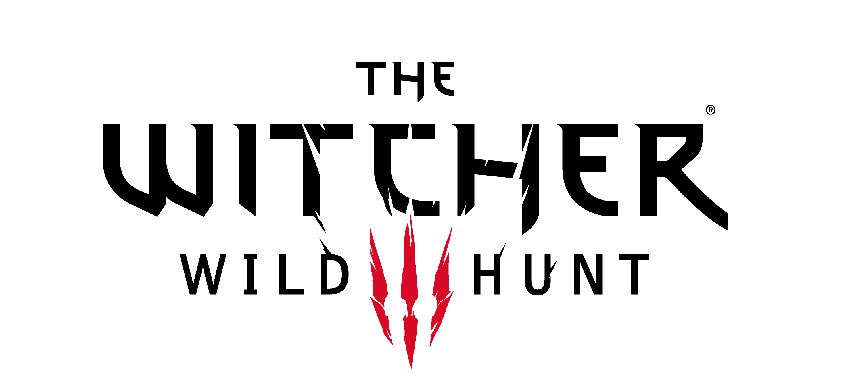
Even in writing this, in putting a summation of my experience with the game down into words, I still don’t know how one would actually review The Witcher 3: Wild Hunt. CD Projekt Red’s third instalment in the life of the titular witcher, Geralt of Rivia, is a game that feels larger than any of the behemoths one might encounter while playing.
The size of the world is immense – the word expansive comes to mind, and while there’s a ridiculous plethora of quests, activities and monsters, there’s also reasonable use of breadth to make the world feel large. The best analogy to that would be the importance of blank space on a page, with the spaces between eliminating the clutter that might come from a game with so many things to do.
That emptiness feels like a strange thing to focus on, but it’s what gives it that extra level of depth. The first impressions of The Witcher 3: Wild Hunt are all about the weight of the world, but with the game played through, literal real-world days spent in the body of Geralt, it’s the sense of space that is most prevalent. There’s opportunity to explore, but whether you want to walk, ride or sail, there’s plenty of nothing to travel through.
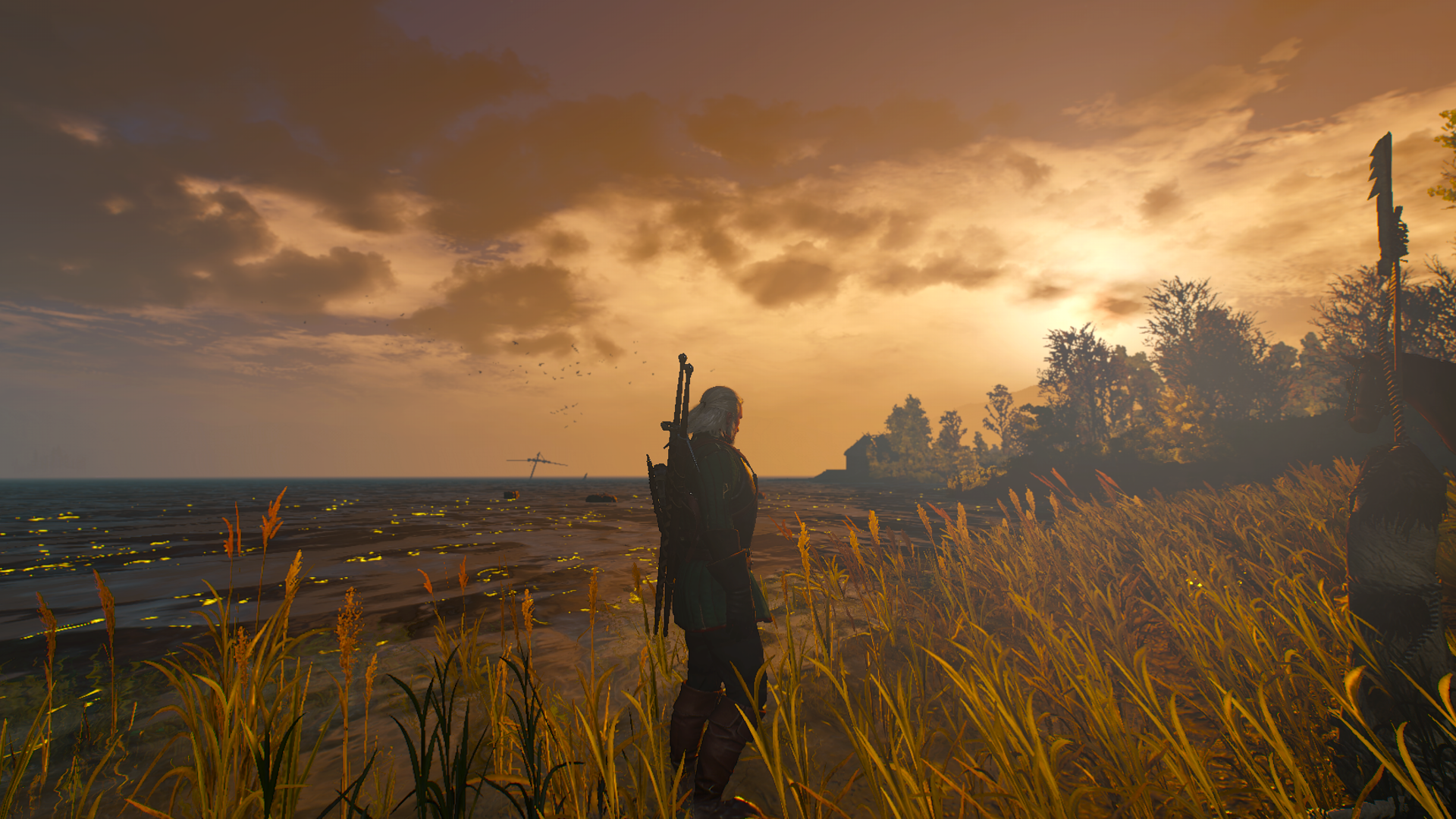
Okay, not nothing… but an empty, spacious environment.
Not everything encountered has a direct function. It’s more the case that the world is built, and all of the elements work together to make that world a more tangible place. There is more to the design than just the way the features of the world have been damaged by weather, war or witchering, but a feeling of despair throughout.
Almost nothing feels new – devastation has touched each corner of the world, and rather than being a final turn in a tale of woe, the world continues. Villagers who have lost their home persist in hopes of rebuilding, land soaked with the blood of battle finds new animation through the monsters drawn to the killing fields, and a city figuratively ignited by devout persecution (and sometimes literally) closes in on itself.
There is a sense that any discord in the world attracts undesirable forces – the line between which is worse is blurry, but it’s often the case that the malicious spirits of the world are drawn to the especially heinous acts of the living. It’s often realistic and as a result, very confronting.
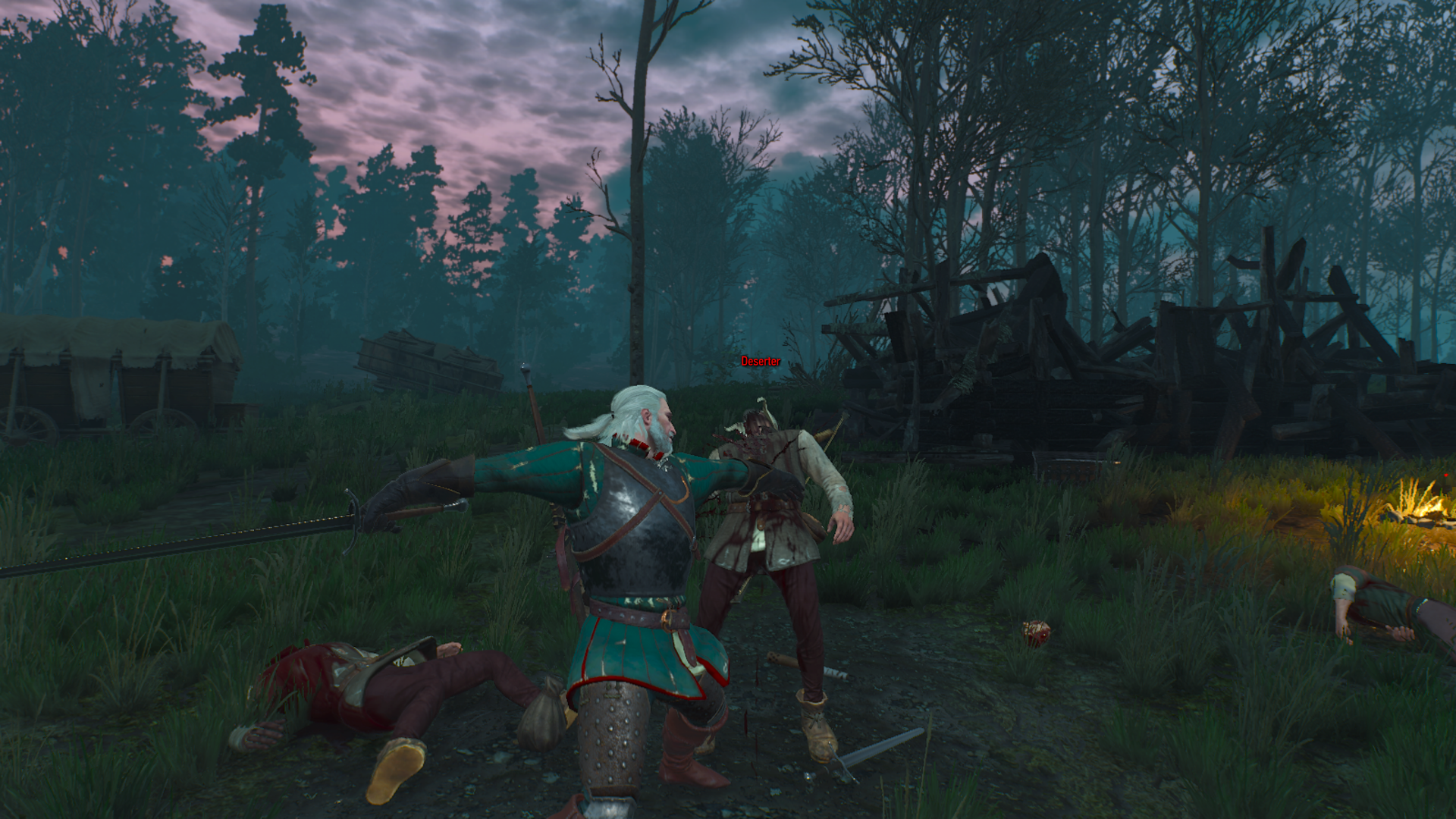
There are competing forces even amongst allies, and many quests will position Geralt between two or more choices – none of them easy. The story itself is simple in sorts – Geralt is looking for his old ward Ciri, enlisting all of his contacts and calling on all of his favours to find her before the ethereal Wild Hunt does.
Some of the characters will be those from Geralt’s past, and where that’s not the case, there is often a link from the supporting character to Ciri herself. Some such as Dandelion, Triss Merigold, or Vernon Roche are familiar from our last dalliance with Geralt in Witcher 2: Assassin of Kings.
Others such as Ciri, His Excellency Emhyr vas Emreis, Vesemir and Yennefer of Vengerberg come from further back in Geralt’s past. The games were built upon the lore of Andrzej Sapkowski’s Witcher novels, and to allow CD Projekt Red to make the world and story their own, Geralt was introduced with amnesia and a new start. The Witcher 3 represents the merger of both Witcher worlds.
Whether the characterisations would feel authentic to fans of the written, there is no discernible difference in quality between the ones that were introduced by the games. With the use of characters familiar to Geralt but perhaps not the player, the game presents out much lived-in world with tangible inhabitants, with their own agendas that are often at odds with what Geralt wants or does.
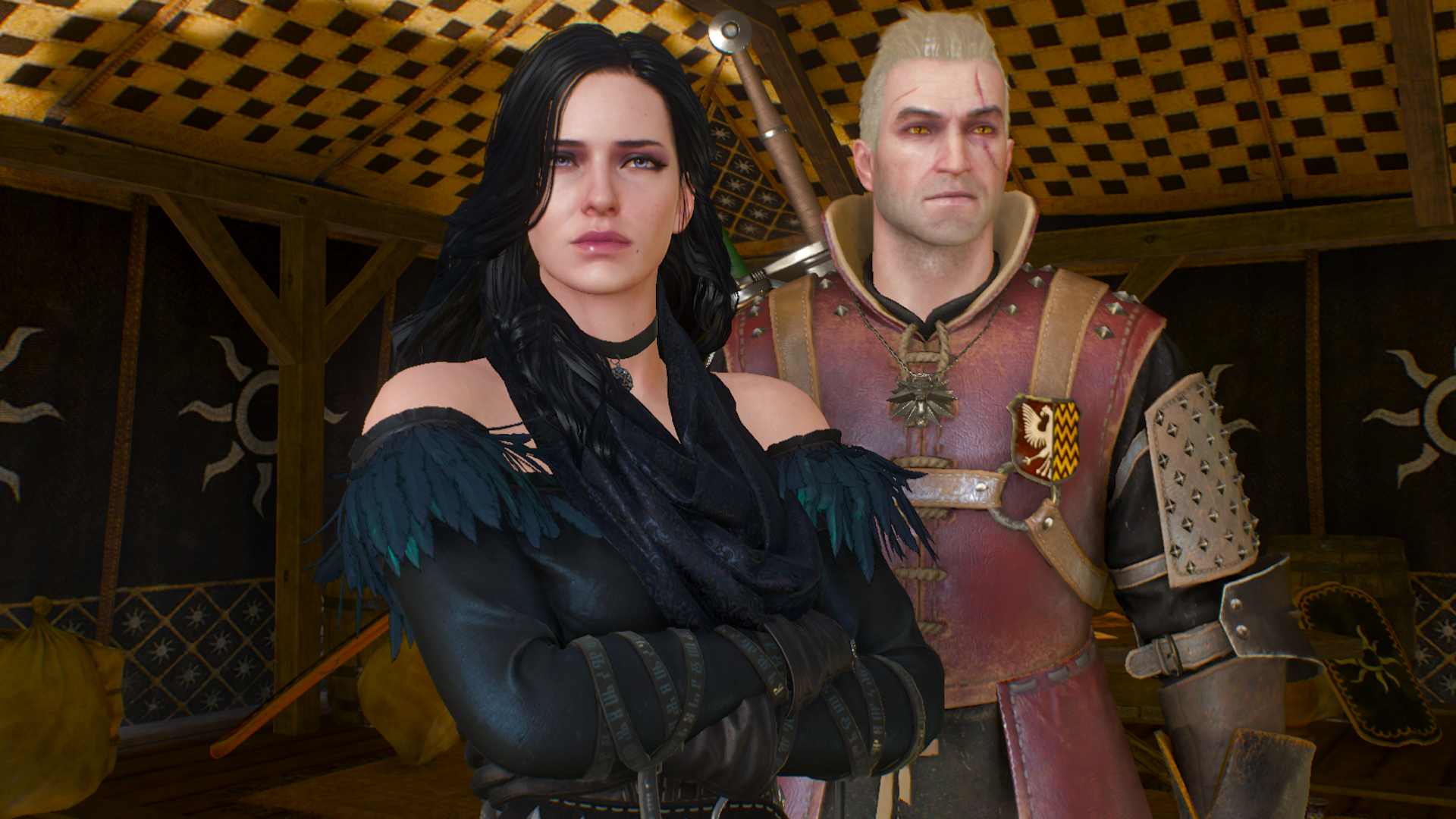
It’s here also that the game carries much of its heart. Yes, an ominous presence threatens the land, but it’s the small-scale, the staple tragedies oft-touched by a flicker of magic that weaves dozens of threads into a single strand.
The world of the Witcher is a severe one – there are consequences at every turn, and it doesn’t take long for repercussions to be felt, with the result of one action or quest cascading into a force that affects many subsequent stories. The severity is a big part of the tone, and yes, some of the characters in the game are casually misogynistic, but it’s never embraced – and Geralt stands against it very firmly. The major questline in Velen is particularly dour, but it’s handled in a murky-grey manner that is echoed throughout the game.
There are few heroes in a witcher’s world and those that are, are not embraced as we imagine we would embrace heroes, but turned away as heretics, freaks, or women.
Even the order in which you choose your dialogue can affect the way a conversation plays out, which feels much more natural that the way games often allow the player to ask all manner of questions without consequence. Dialogue also plays a major part of the mood, and while it has its harshness, the world also brings human. Geralt, the man whose emotions were taken away by the traditional patented witcher mutation process, will sigh like nobody’s business over all manner of menial tasks, but he also brings the banter. His performance in a play, and trading puns with Yen are particular standout moments.
Whether for lovers, friends, enemies, or those in the middle of all three, he brings the sass.
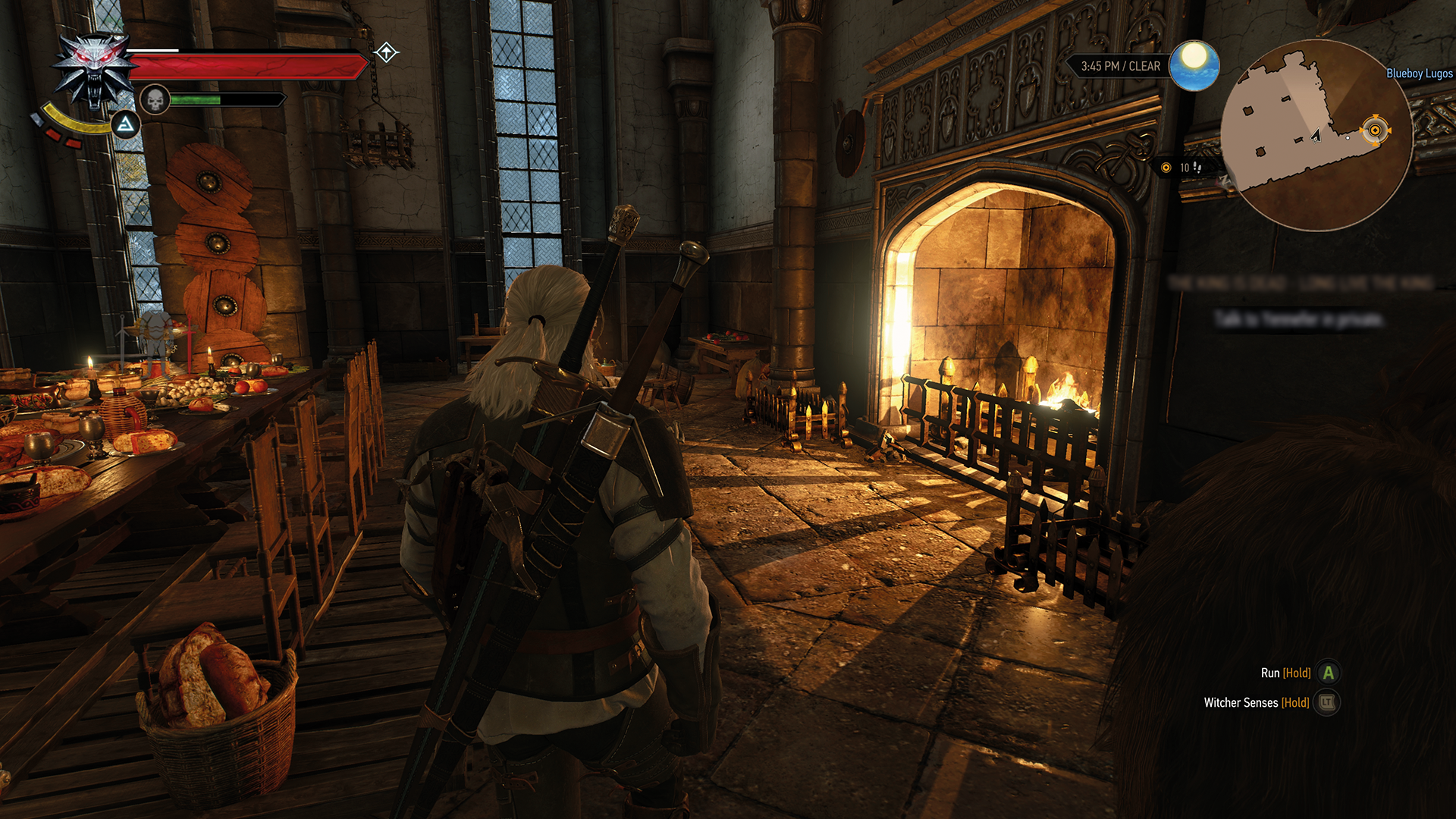
The graphics of The Witcher 3: Wild Hunt are dazzling. The environments often feel like real places, and the many hours of amber sunsets you’ll ride around in will feel like a welcome dose of Vitamin D while the real world sun is tucked away for the night. Characters are amazing in detail, though NPC body types for random villagers could use some variety.
Enemy design is also breathtaking, and it’s the immense bestiary present that brings this to mind. Various quests will also bring new elements to bear, conveying the confusion of Geralt in stranger moments with billowing mists or altered perception. The cinematics of the game are beautiful also, and many sequences carry elegant use of shot composition, light and shadows, framing, and colour – even if there’s a perpetual Aard sign blowing through Geralt’s hair.
While the aforementioned space contributes to the feel of the game, it also enhances the aesthetic. The scope transforms the environments, bestowing a design style that through its size conveys the distinct countries, and allows for tangible ecosystems to exist without suffering from clutter. Small groups of monsters or characters can occupy an area, dotting the shorelines instead of seemingly holding it. The breadth of the design also allows for more variety within an environment, with ruined bridges or abandoned homes gaining a feeling of desolation through their relative remoteness compared to the population centres.
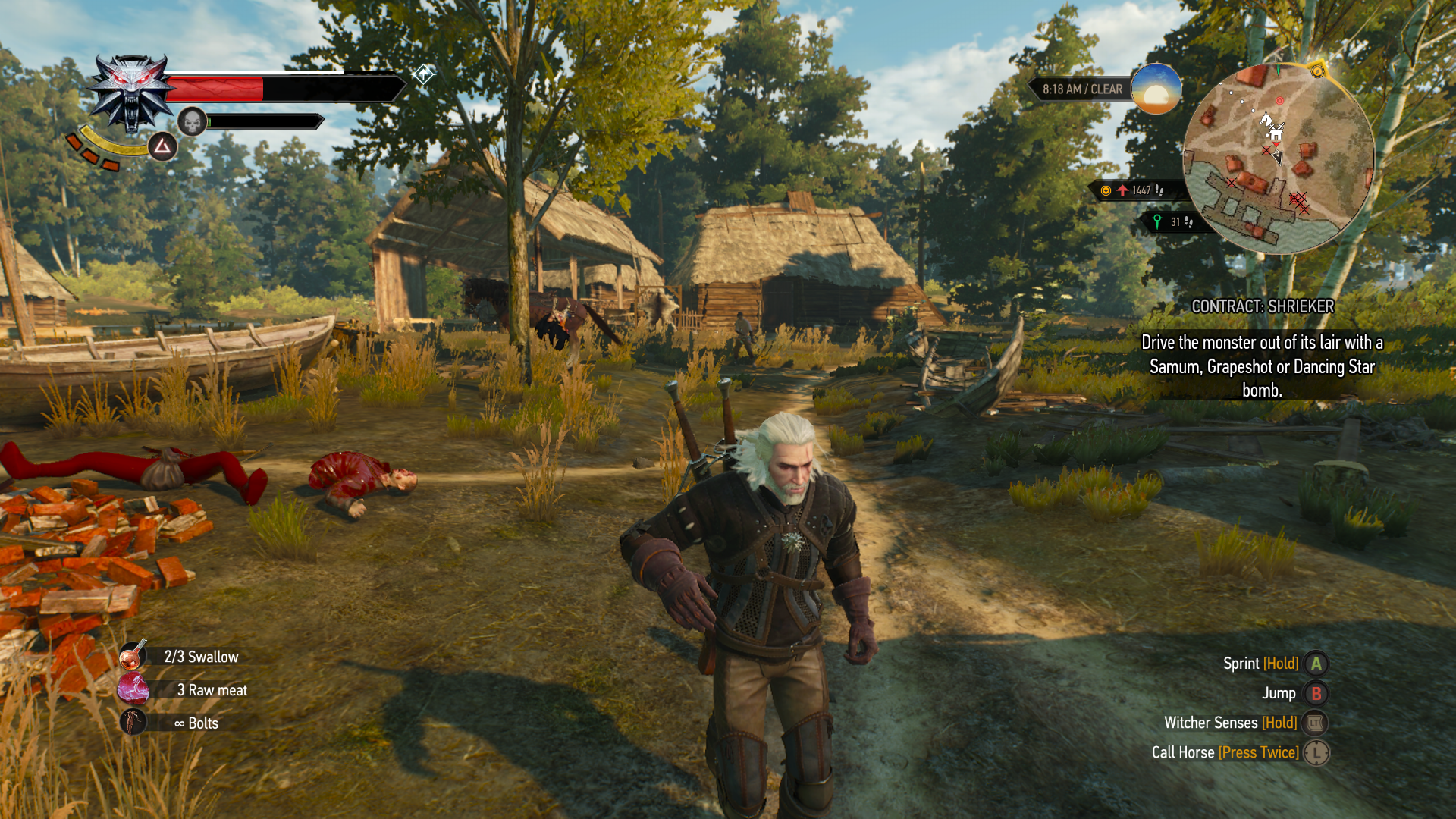
The Witcher 3: Wild Hunt has sounds that are visceral, both serving their purpose yet also informing. each of the monsters, weapons or other factors of the environment have their own cues. The voice acting throughout the game contributes plenty of personality to the characters, and beyond the character design and the writing, are integral parts of bringing these characters off the page.
Geralt’s delicious rasp puts the character within the reach of the player, still very much human, but still at a distance that allows the depiction to reinforce his mutations and lived-in body better than other witchers like Lambert or Vesemir. They are not poorly acted by any stretch, but their tone is distinct, even among the emotionless entrants of the witcher discipline.
The ambient dialogue throughout the cities and villages to lend realism through both the quality of the dialogue and the voice acting it’s delivered with, but there is also some repetition of those same flavourful snippets when returning to the same area.
Music is probably the least impactful contribution to the game experience – most of it will blend into the background, adding to the tone but without drawing attention – though that doesn’t apply to the combat music. It’s far from discreet and it definitely wants your attention. Yes sure, you’re in combat with your eyes and hands, but your ears are in this fight too and you’re gonna know about it.
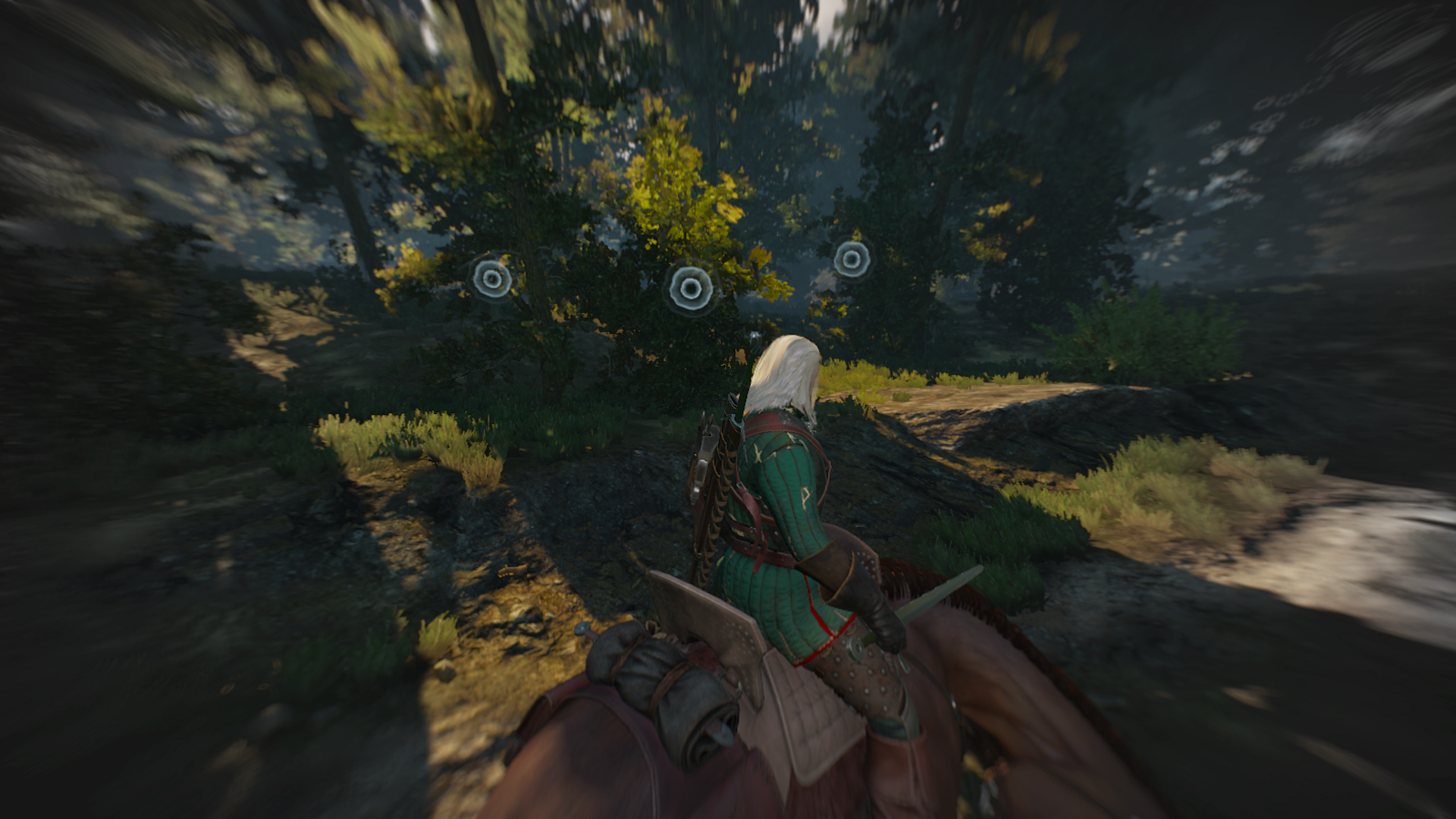
The best track in the game is the song sung in Novigrad by Dandelion’s better in many respects, Callonetta. Her song, The Wolven Storm, is haunting yet elegant. It also comes at an unexpected moment in the middle of a rowdy tavern, and while the trope of drunken louts suddenly sitting upright for a romantic song is well-done, it’s executed perfectly.
The narration referred to in the impressions article unfortunately overstayed the welcome laid out for it, and the way each was tied to a region meant that travelling to a previously explored area would often be accompanied by a reference to a quest played many literal days prior.
The gameplay, the actions that the player takes to play it, is good, but is not all success compared to the other elements. It’s also the most important one. The areas where the player has to play out the role of the witcher are great – the investigating, the interaction with the world, and the way different elements are introduced is done rather well.
Combat is also a big part of life as a monster-hunter for hire, and when it works, it’s great. There are a few times when it becomes awkward, but this isn’t a button masher. Striking a foe without the right weapon, without being prepared, or without knowing their weaknesses is a recipe for failure. Changing tactics on the same foe can alter your result, turning a troublesome beast into another trophy to sling over your horse. If you want to fight a wraith without laying a trap, your weapon will pass right through the spectre.
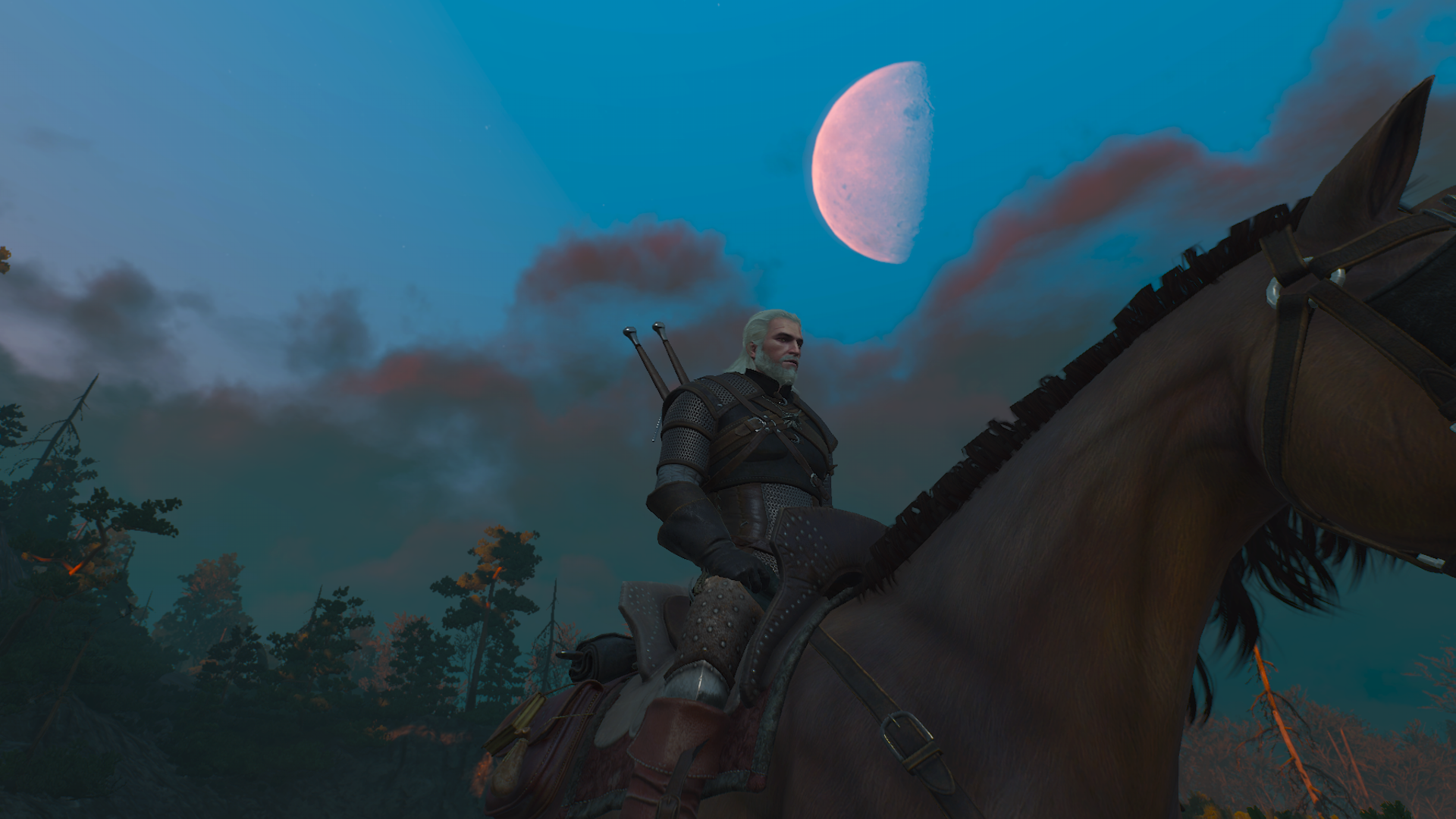
There’s no quick heal to buy you health in The Witcher 3: Wild Hunt – it’s all dependent on your potion and skills – and the former need to be used strategically instead of thrown down Geralt’s gullet.
Navigating obstacles can be good too – some dungeons lend to a graceful free-running style that is elegant when you pull it off, but that’s often as likely to result in Geralt jumping into a wall and falling. It’s the simple act of walking that is one of the most challenging part of life as a witcher, and riding horses suggests it’s all kinds of movement. The line between climbable and not, whether on two feet or four, is a murky scratch that is never where it appears to be.
Geralt’s preferred means of locomotion is either dodging while he holds a sword, jumping into walls, or sliding down mountains on an invisible hoverboard. His trouble with mythical beasts are nothing compared to his true weakness – water. Thankfully swimming is rarely required, and only in a few occasions is there any peril attached, but moving through the watery depths is terrible.
Some areas of the world can also become difficult to leave due to unscalable surfaces, and as fast travel is only available from certain locations, getting trapped in an area and having to somehow get out can be an annoyance.
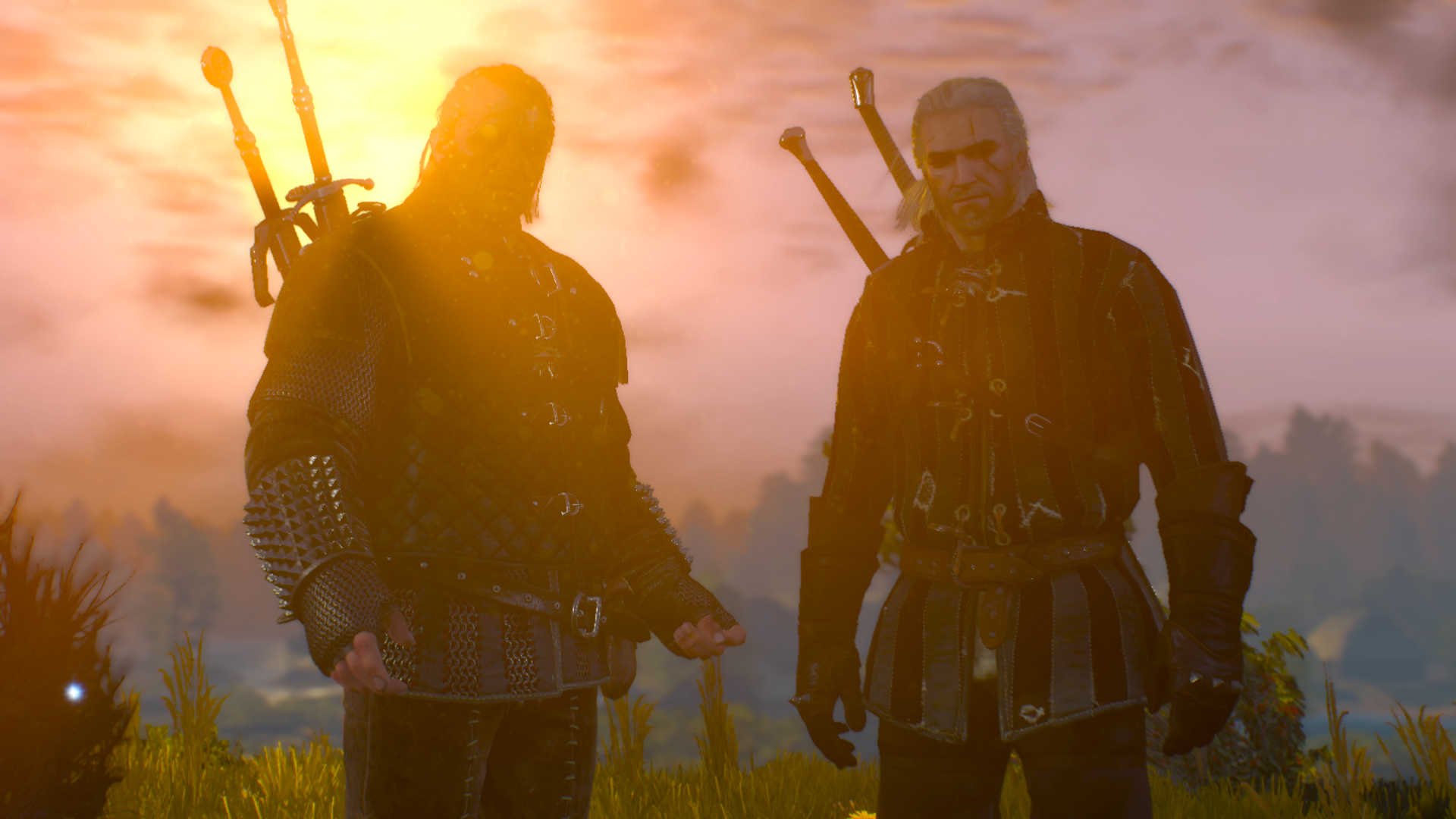
There are plenty of elements familiar from roleplaying games. Potions, oils and bombs can be created through alchemy, equipment can be crafted, enchanted, repaired or even broken down, and merchants will buy and sell all sorts of things you find. The map is usually good, but occasionally the pathfinding gives up on giving directions at all, at which point you’ll need to find your own way to your destination.
Aside from the main quest, there’s a ridiculous number of things to do. Fight clubs and races are available to accompany side quests, witcher work and treasure hunts, but the star of the additional content is a little card game by the name of Gwent. Gwent is everything. Gwent is so important. You may not get it at first. Hell, you may not even like it, but Gwent will wait for you to come around, and will suddenly seem more pressing than roaming nekkers, the Nilfgaardian armies, or the Wild Hunt itself.
Much has been made of CD Projekt Red’s approach to content for the game. What they’ve done with DLC is a fantastic thing for players, giving out sixteen pieces of varying sizes as a thank-you for buying the game. Each one of those is out now, with the longest and latest being one to add a New Game+ mode to the game. There have also been significant patches that have introduced an alternate control scheme, improved the inventory, and much more.
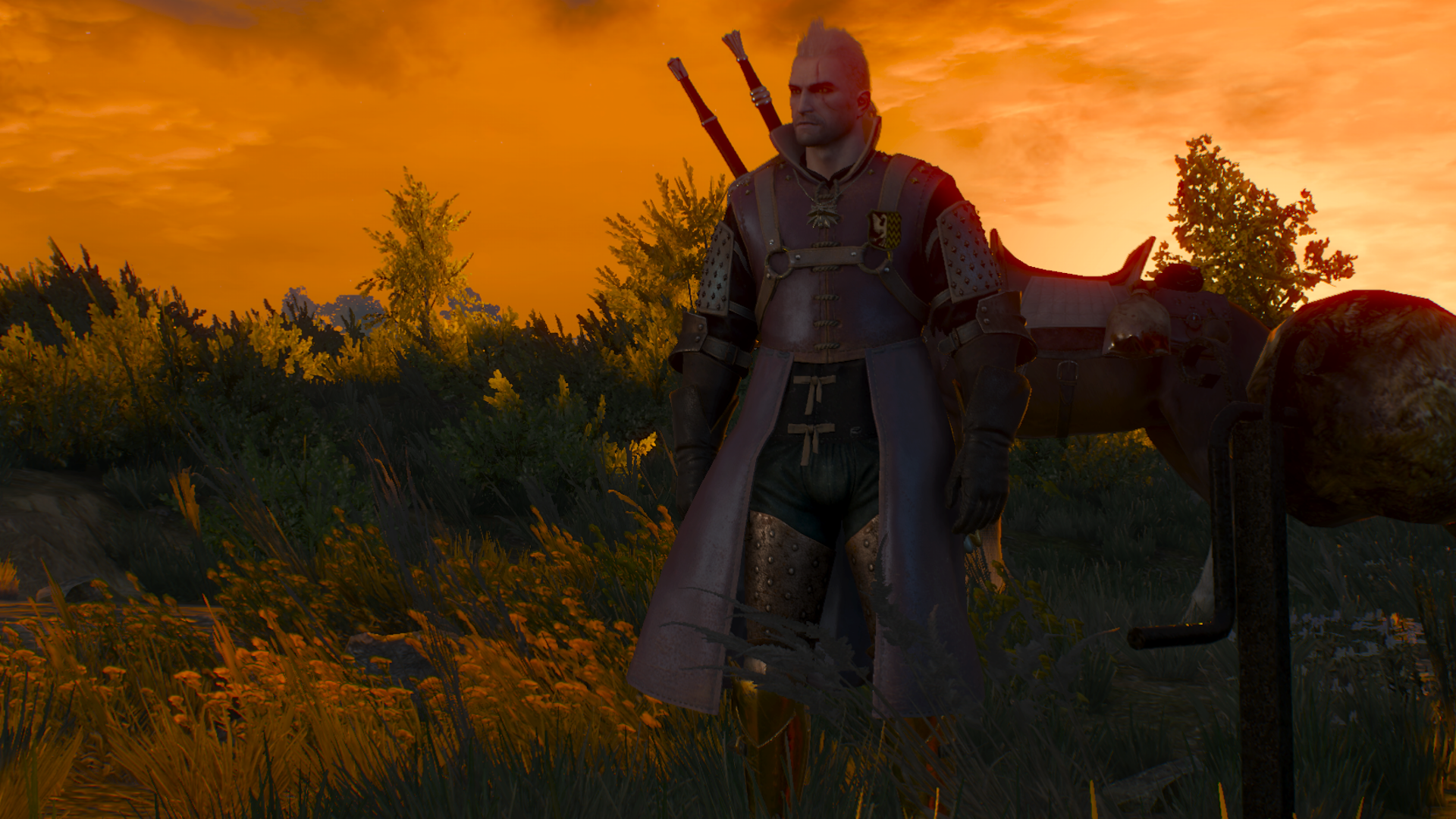
Despite the immense size, and the huge chunk of a life it takes to compete every aspect of the game, it’s still not quite enough – in one particular respect. No, not gwent cards! Okay, maybe some gwent cards, but the real area it feels short is in the time spent with Ciri.
The search for Cirilla is the focal point of the story, and the relationship between Geralt and her is one of the most delightful portrayals of a father-daughter dynamic seen in a game. Their time together is something to be cherished, but it would have been great to explore it further. Perhaps that’s a possibility for the future paid DLC.
It’s a large game all the same, and playing it over a long period of time, stretching it out to many weeks rather than blitzing through the game as quick as can be, I feel like the story had ample room and space to grow. Like a fine meal with every bite savoured, I can’t help but feel taking time with The Witcher 3: Wild Hunt only enhances the impact of the game’s story, and turns the relationship between Geralt and Ciri into something deeper by the eventual close of this tale.
Save Game definitely recommends The Witcher 3: Wild Hunt. We reviewed an Xbox One copy of the game.



